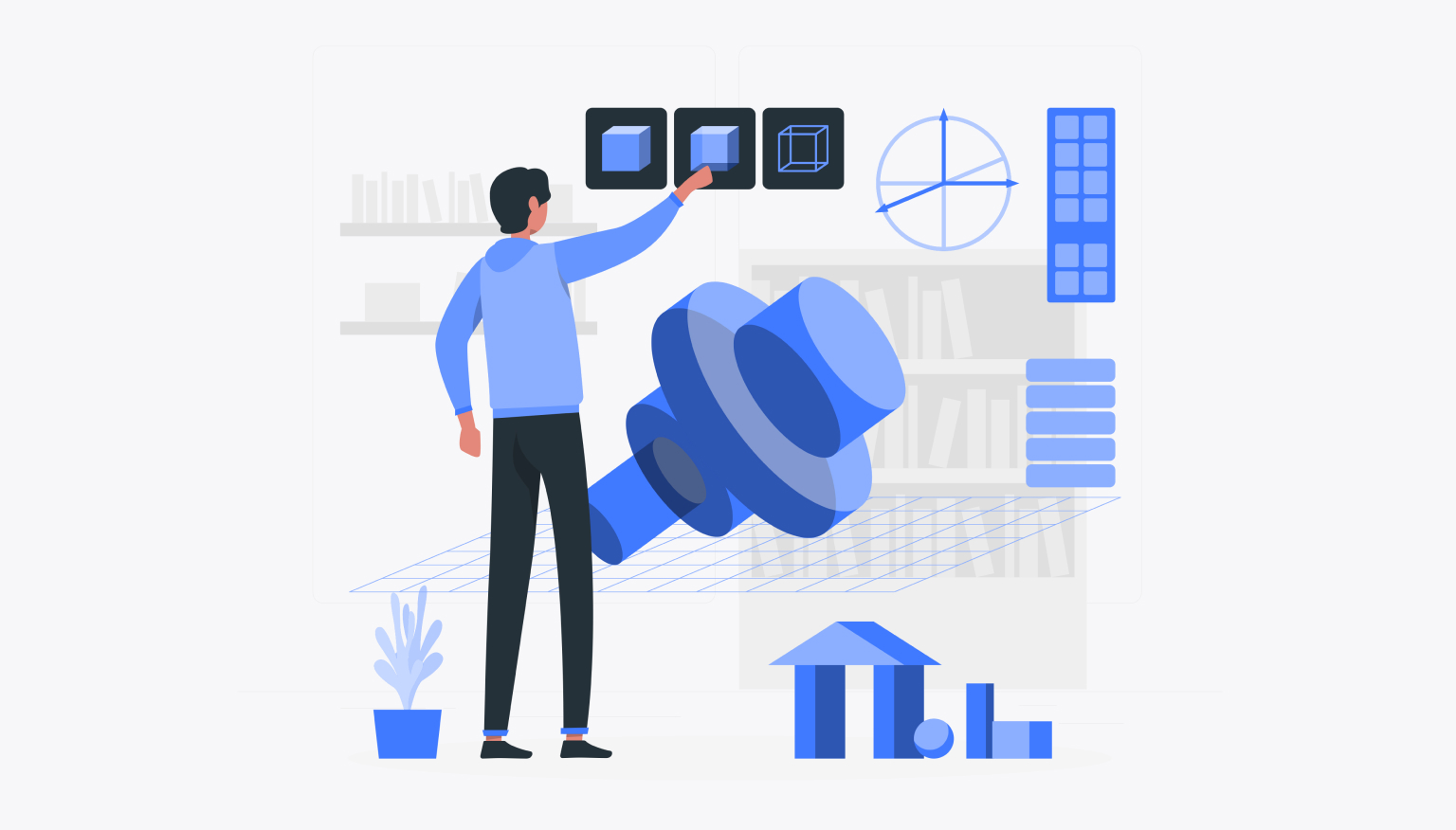Website facilitation - 10 useful elements
What features of the site are useful for users? Which one will be the happiest? Check out our offer list.
Of course, some people like them more, some less, but there is no doubt that the purpose of their use is as positive as possible.
The question is, are there universal facilitators? We're talking about the ones that will work on most sites.
In my opinion, by all means.
Below you will find a list of ten that will work in many cases.
Simplifying your website - 10 features to look out for
1. Implement a feature to send a copy of the message to your own mailbox
I realize this has been discussed many times on our blog, but if there's something really worthwhile , we see no reason to quickly close this topic.
I mean an option in a form (like a contact form) with which you can send a copy of the message to your own mailbox.
Without this, we actually have to trust the form itself 100 percent. We just have to trust that when we click the "Submit" button, the message has actually been sent.
Instead, this feature allows you to archive the sent text in our mailbox. We just have clear evidence of what and when we shipped. It is always something you can turn to if needed.
2. Include a Table of Contents in Blog Posts
We use LuckyWP's Table of Contents on our blog and I can honestly say that this is one of the best decisions we've made in a while.
We also noticed a lot of followers of our actions from this angle 🙂 .
This WordPress plugin allows you to automatically generate a table of contents so users can preview the items below.
And that's not all of its benefits!
The links highlighted in red were added by Googlebots exactly based on the titles that the LuckyWP TOC took into account when creating the TOC.
By clicking on any of the above links, you will immediately go to a specific place in the entire text.
Overall, if you are considering starting a website, then the blog table of contents will be a hit.
3. Think about the meaning of the sidebar
Sidebar, or sidebar.
A section of the page that has been used mainly in blogs for many, many years. Once an integral part of them, today it is increasingly seen as a relic of the past.
While on subpages like categories and tags, a sidebar usually makes sense, there are some indications in a single blog post that you can do without it.
We adhere to the principle that an article is an article. If someone visits the site, it means that he wants to read it. He is interested in text, content. They are not interested in any elements on the side that only take up space and spoil the symmetry.
Many people use the sidebar to place call to action elements. That's great, but the desire to get more conversions can't take precedence over aesthetics and usability.In the end, such a section can be placed directly below the blog article.
Sidebar on the site, or sidebar tips - this is a text by Michał Ziłkowski, which you can read if you are interested in this topic.
4. Enter a search engine (but with your head)
Search engines on websites are used to quickly find the content users want.
These are usually a good option, assuming, of course, that the content of the website in question is extensive enough that it makes sense to comb through it with just a search engine.
On the other hand, if your site is small, leave it alone.
Otherwise, make sure the search engine returns relevant results first.
Moreover, if your search is mostly blog content, limit your results to articles. Appearance in the results on the main page "Contact us", "About us", etc. usually doesn't make sense.
5. Use Hick's Law
Facilitating the work of the site is closely related to Hick's law.
He claims that the more choices we have, the more difficult it is to make a decision. In many cases, the sheer number of options available overwhelms us so much that we end up reluctant to make a decision.
This principle can be formulated in one sentence: less is more.
That is why minimalism has dominated websites for several years now. Reducing distractions and other elements, oddly enough, works in favor of site owners.
If there are fewer elements fighting for our attention, then our eyes wander only over the most significant of them.
Hick's Law also applies to the design of price lists, but you can read about this topic (and many others) in the text dedicated to this very problem: Hick's Law on websites - how to use it in practice?
6. Get rid of the slider on the main page
Who loves sliders?
Primarily website owners.
Yes, that's right. The number of slider supporters on the site is usually limited by the site owner and only a part of the visitors.
There has been a lot of research into the usability of sliders in recent years, and the results have generally been convincing. The second and subsequent slides are of exactly the same interest to end users as the following subpages of Google search results.
That is, such a small percentage that it should not be taken into account.
A slider, if it has aesthetically composed content, can look beautiful. There is no doubt about this. However, from a usability point of view, in many cases it creates problems and is an unnecessary element.
7. Use relative dates
Does the fact that the article was written on 01/21/2019 tell you anything?
And what does the fact that it was written 4 months ago mean?
That's the difference.
The date represented by the first method is absolute.It will be relevant and "correct" for all time. No matter where we are - in 2030 or 2040.
However, there is a problem, namely: we have to organize this date in our head, place it in time. Only after some time do we understand what specific point in time we are talking about.
The second way is relative date. It refers to the current moment and counts backwards from it.
For us, people, it is more accessible, as it immediately correlates the date with the present. We immediately understand what time it is.
When planning to promote a website, consider presenting dates in relative terms on your own blog. Yes, there will certainly be supporters of the traditional way of presenting them, but practice dictates that you stick to a method designed for a wider audience.
8. Show the estimated reading time of the article
Many consider it superfluous, although I know some who it really helps.
Estimated reading time of the article is only indicative. It cannot be taken in a certain, literal way. Each of us reads at our own pace; in fact, the averages of different studies of reading speed in Polish give different results.
In fact, it is important to quickly show whether reading a given text takes only a few minutes or whether this reading takes a longer time (for example, 20 minutes or more).
Then you can quickly assess whether it is worth taking a coffee to read or whether it would be wiser to throw the text into Pocket to read it later.
9. Choose to scroll over click
Making websites easier to use also has to do with how they are read.
Both clicking and using the mouse scroller (or our finger) is an action. However, clicking (or confirming with a finger) is an action that requires more from us.
Someone may ask a question - is it possible to consider tapping with a finger in the context of an action? Is it worth paying attention to it at all?
Yes, definitely.
Otherwise, Facebook wouldn't have an infinite scroll feature on the homepage, but only pagination, which, for example, would force us to go to the next page after ten events.
Instead of requiring users to make a lot of decisions, it's better to make everything as easy as possible for them. Provide content in a form that is easy to scroll (or scan), and only at the very end, for example with a CTA section, direct them to take an action.
Of course, all this should be done in moderation, since forced introduction in many situations will not end in anything good.
10. Use the so-called crease
Content is often referred to as "above the fold", ie. above the so-called inflection point.
What is the meaning of this?
The principle is that the most important (or rather the most eye-catching) content should be at the entrance.Immediately, so that the user sees it at a glance, and not after performing some action (such as scrolling).
And again I give you a hint in one of our texts where I discuss exactly this topic. Space above the fold - there you will find a lot of valuable information, as well as ready-made examples.
Why is it being introduced to simplify the work with websites?
Amenities on websites are in many cases "taste", that is, seemingly unimportant matters that turn out to be very useful in the end.
Their role is simple - to increase the level of usability of sites, and simply to please our eyes.
I hope that the above text has shed some light on this topic for you.
















